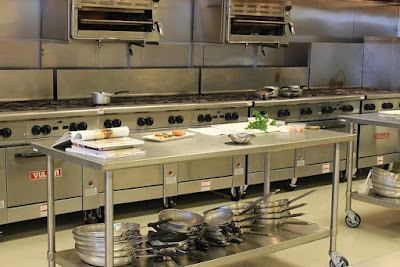The toughening process of steel alloys is different. Each grade of steel differ from the other and so do its characteristics. During the preparation process, particular alloys are used for impacting the mechanical attributes of the steel. Further heat treatments are done to give that shape. Now considering all these vital steps let’s see which steel fits your restaurant business the best way.
Stainless steel with food-grade label
Talking of food-grade stainless steel 316 type gets a recommendation for that. Contents such as chromium and nickel make it resistant to a high degree of temperature. Indeed it can serve you incessantly till the temperature hits up to 800 degrees celsius. The 316 types of stainless steel benches or stainless steel sinks are designed to withstand alkaline or acidic elements. Not to worry as it performs robustly on heated trolleys and paneled ovens.
Pros of duplex steels
Duplex steels are tough and robust.
Best chosen as containments for the vinegar manufacturing companies. Indeed it serves the best for processing mustard as well.
Best for companies relying on corrosive food-oriented situations.
Richness in chromium makes it worthier to use.
Cons of duplex steel
It is difficult to fabricate.
A high level of strength makes it inflexible.
It is hard to work with the duplex steel.
430 type of food-grade stainless steel have less amount of nickel content. In terms of quality, the alloy is commendable. However, cannot count on its corrosion resistance as it is less compared to another alloy. When exposed to air it can develop rust but is designed to tolerate that. No need to worry because it will not crack. Organic acids cannot leave an impact on grade 430 because of their innate robustness. The reduction of nickel makes it a reasonable option in terms of price.
If you talk about all-rounder performers then 304 and 316 will win. These grades are mostly chosen for most of the toughest steel equipment. Its tolerance to corrosion, heat-absorbing capacity, and capability to ward off the chemical influence makes it the real choice for the kitchen.
Next, we will talk about the 400 category steel grade which is chosen as the base material for making splashback other catering tools. In comparison to 300 categories of steel grade, the 400 steel grade is more reasonable.
Both 400 and 300 steel grades are considered food safe and versatile. Additionally, they are cost-friendly and hassle-free in terms of cleaning. Both the steel grades perform well regarding high temperature and corrosion resistance.
Final talk
These are the basic categorization of the steel grades and having an idea of these will help you pick the right one needed for your commercial kitchen.


No comments:
Post a Comment